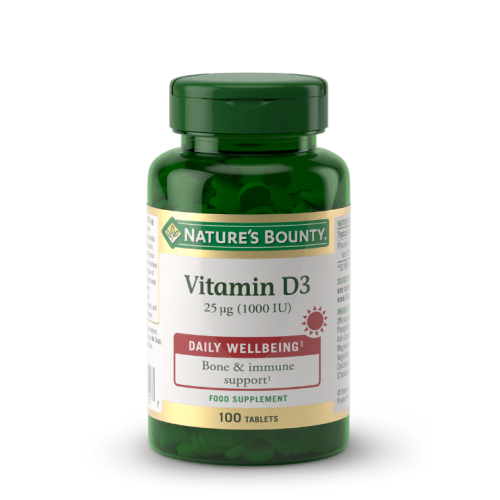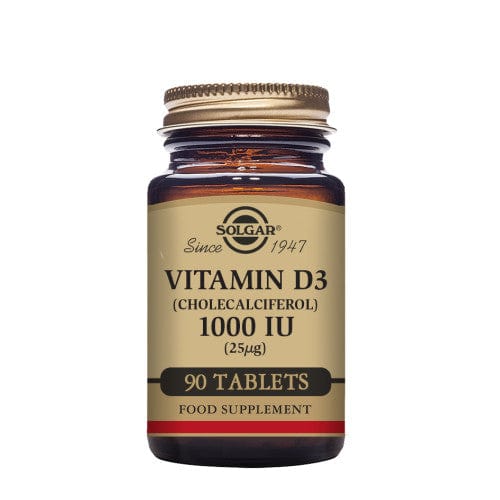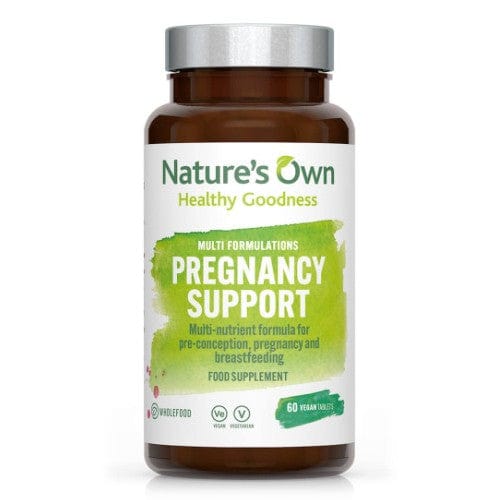Mon-Fri: 9am - 5pm
Excluding Bank Holidays
Mon - Fri: 9:00 - 17:00PM
Excluding Bank Holidays
 Free UK Delivery
On all orders over CA$95.46
Free UK Delivery
On all orders over CA$95.46
 Worldwide Shipping
With Reduced International Shipping Charges
Worldwide Shipping
With Reduced International Shipping Charges
 Collect Ocean Reward Points
Get Discounts on the things You Love
Collect Ocean Reward Points
Get Discounts on the things You Love
Are you feeling a bit under the weather? Maybe it's time to stock up on some vitamin D tablets. These little wonders are like sunshine in a bottle, delivering all the benefits of the sun without the risk of a sunburn. And with vitamin D tablets 1000 IU, you'll be getting a hefty dose of this essential nutrient.
So why do we need vitamin D tablets? Well, for starters, vitamin D is crucial for maintaining healthy bones and teeth. It helps your body absorb calcium and phosphorus, which are essential for bone growth and strength. Vitamin D also plays a role in keeping your immune system in tip-top shape. It can help ward off those pesky colds and flu viruses that seem to make the rounds every winter. So if you're tired of being stuck in bed with a box of tissues and a thermometer, it's time to give your immune system a boost with some vitamin D tablets.
 Save 30%
Save %
Save 30%
Save %
Bone and muscles support Immune system support: Vitamin D is an essential nutrient needed to support your immune system Active form of vitamin D –...
View full details Save 0%
Save %
Save 0%
Save %
Keeps bones and teeth healthy Helps muscle function Supports immunity Aids calcium absorption In a form that is easy for the body to use
 Save 50%
Save %
Save 50%
Save %
Comprehensive multivitamin and mineral, with wholefood nutrients, comprising all of the most appropriate vitamins and minerals necessary for women ...
View full detailsTips for Taking Vitamin D Tablets Effectively
Taking vitamin D tablets is a simple and convenient way to supplement your body's needs. Here are some tips to help you get the most out of your vitamin D supplementation:
1. Take your tablets with a meal: Vitamin D is a fat-soluble vitamin, which means it's best absorbed when consumed with a source of fat. Taking your vitamin D tablets with a meal that contains healthy fats, such as avocado or nuts, can enhance absorption.
2. Be consistent: To maintain optimal levels of vitamin D in your body, it's important to take your tablets consistently. Set a reminder or incorporate it into your daily routine to ensure you don't forget to take your supplement.
3. Follow the recommended dosage: Stick to the recommended dosage provided by your healthcare provider. Taking more than the recommended amount can lead to vitamin D toxicity, which can have adverse effects on your health.
4. Pair it with other nutrients: Vitamin D works synergistically with other nutrients, such as calcium and magnesium, to support bone health. Consider incorporating foods rich in these nutrients into your diet or taking them as separate supplements to maximize the benefits.
Taking vitamin D tablets effectively is all about consistency and ensuring optimal absorption. By following these tips, you can make the most out of your supplementation and harness the power of vitamin D for optimal wellness.

